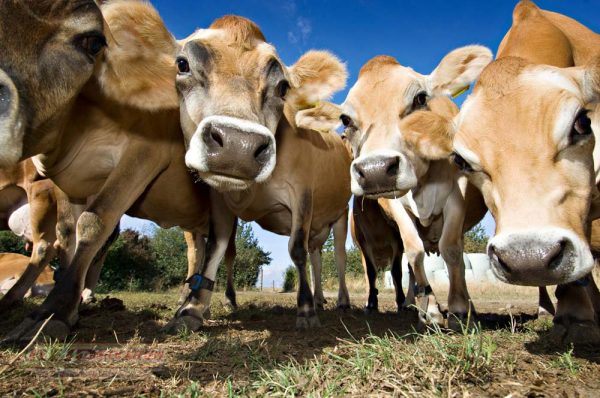Improving your butterfat percentage
Butter is the new super-food and the payment available for butterfat in milk is now nearly the same as for protein. If you want a healthy milk check that means we must consider how to produce as much butterfat as possible. To do this, we need to think about the drivers of butterfat in new ways and avoid self-inflicted wounds caused by feeding mistakes that actually reduce the cows’ opportunity to produce maximum milk solids.
During the late part of winter and early part of spring it is very common to see farmers worried about the fat percentage in their milk. This usually happens when silage and hay are taken out of the diet and replaced with green pastures. While it gives the farmer comfort spending less tractor hours rolling out conserved fodder it also creates a radical change in the cows’ diet as they transition from a diet too high in fibre to one that is too low in fibre.
Fibre is important to butterfat production for several reasons. Firstly, when fibre is digested two fatty acids are produced in the rumen called Acetate and Butyrate which are the building blocks of De Novo Fatty Acids. That’s a lot of big words for saying cows turn fibre into butterfat.
A healthy rumen with a neutral pH is vital for cow health, cow fertility and milk production. When cows chew their cud, they produce saliva, and that saliva is rich in food digesting enzymes, recirculating minerals and acid neutralizing sodium bicarbonate that helps to prevent acidosis. When a cow has acidosis the very first bugs in the rumen to die are fibre digesting bugs and these are the ones that produce butterfat. That is why vets and nutritionists ask about butterfat percentage when diagnosing acidosis.
There is a different cause of low butter fat that is not fully understood. All plants require photosynthesis to grow. Immature fresh grasses produce more leaf than stem. Mature grass grows more stem than leaves. In late winter there is low fibre and excess protein, carbohydrates fats and oils compared to what the cows require in the leaf. It is the fats and oils that reduce butterfat. Basically, cows struggle to digest fat contents greater than 4% and it is common to see pasture test results over 6% fat during winter.
We know that rumen microbes struggle to digest these polyunsaturated fats and that they need to be converted into saturated fats before the cow can use them. We also know that there aren’t enough hours in the day for this process to occur naturally once fat content exceeds 4%. We also understand that the specialised microbes that convert unsaturated fats into saturated fats are very sensitive to acidosis and take weeks to recover after a bout of acidosis. If we can prevent cows getting acidosis in the first instance, then we shouldn’t have a problem. What we don’t know is, what magic bullet to add to your stockfeed to make the problem go away once you have fat induced butter fat depression?
Fortunately, this excess fat problem seems to solve itself once the sun comes out in late September. I have noticed that farmers using a hot wire to strip graze don’t seem to have this problem of butterfat depression. Perhaps it is because cows eat mainly leaves and very little stem with unrestricted grazing but are forced to eat stems as well as leaves with controlled grazing. I speculate that the fats and oils are concentrated in the leaf rather than the stems.
By being proactive there are plenty of feed additives than can to avoid milk fat depression. Buffers can be used to prevent acidosis occurring when fibre is reduced in the diet. Magnesium oxide (causmag, e-mag) has a very high pH and can help to control rumen acids as well as cow temperament. This year corn is available at a reasonable price and its slower fermentation rate helps to maintain better conditions in the rumen. Studies suggest probiotics can help stabilize the rumen and that products like Diamond V yeast plays a similar role. The key to remember that for good butterfat production don’t make sudden changes to the cows’ diet when switching over from conserved forage to growing green pasture.
